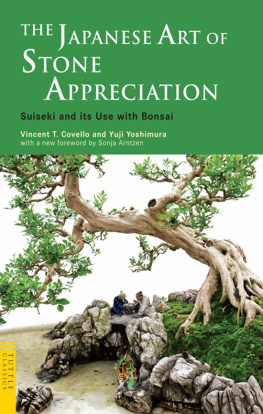Sorting Things Out
Inside Technology
edited by Wiebe E. B ij ker, W. Bernard Carlson, and Trevor Pinch
Janet Abbate, ImJenting the Internet
Charles Bazerman, The Languages of Edisons Light
Marc Berg, Rationalizing Medical Work: Decision Support Techniques and Medical Practias
Wiebe E. Bijke1; Of Bicycles, Bakelites, and Bulbs: Toward a Theory of Sociotechnical Change
Wiebe E. Bijker and John Law, editors, ShajJing iechnolo[,ry/Building Society: Studies in Sociotechnical Change
Stuart S. Blume, Insight and Industry: On the Dynamics of Technological Change in Medicine
Geoffrey C. Bowke1; Scienre of the Run: Injimnation Management and Industrial Ceophysics at Schlwnberger, I920-1940
Geoffrey C. Bowker and Susan Leigh St
Louis L. Bucciarelli, Designing Engineers
H. M. Collins, Artificial Fxperts: Social Knowledge and Intelligent Machines
Paul N. Edwards, The Closed World: Cmnjmters and the Politics of Discourse in Cold War America
Herbert G ottweis, Coverning Molecules: The Discursive Politics of Genetic Enginaring in Europe and the United States
Cabrielle Hecht, The Radiance of France: Nuclear Power and National Identity after World War II
Kathryn Henderson, On Une and On Paper: Visual Representations, Visual Culture, and Computer Craphics in Design Engineering
Eda Kranakis, Constructing a Bridge: An Fxploralion of Engineering Culture, Design, and Research in Nineteenth-Century France and America
Pamela E. M ack, Viewing the Earth: The Social Construction of !he Landsat Salellite System
Donald MacKenzie, Invlnling Arrumcy: A Historical Sociology of Nuclear Missile Guidance
Donald MacKenzie, Knowing Marhiws: Essays on Technical Change
Susanne K. Schmidt and Raymund Werle, Coordinating Technology: Studies in the International Standardization of Telecommunicators
SortingThings Out
ClassificationandIts Consequences
Geoffrey C. Bowker Susan Leigh Star
The MIT Press Cambridge, Massachusetts London, England
For Allan Regenstreif and Adele Clarke
chosen family
hors de categorie
Contents
Table des matires
Acknowledgments
This project has taken several years and spanned two countries and several institutions. We have, therefore, many people to thank, and in these few pages we will do those who we mention scant justice.
None of the work below would have been possible without the support of the National Science Foundation (NSF EVS grant no. SBR 9514744).
We would like to thank our colleagues on the Classification Project, University of Illinois: Stefan Timmermans, Niranjan Karnik, Laura Neumann, jesper Dopping, Theresa Chi Lin, and Randi Markussen for ongoing discussions and insight. Stefan and Laura assisted with the interviews at Iowa. The Graduate School of Library and Information Science at the University of Illinois gave us continual support-we thank all faculty members and doctoral students there for their unfailing intellectual generosity. We also thank the Advanced Information Technologies Group, University of Illinois, for project support for parts of the study, especially Robert Alun Jones.
We are much indebted to the members of the Nursing Interventions Project at the University Illinois. In particular, joanne McCloskey and Gloria Bulechek provided many helpful suggestions during conversations. We would further like to thank the following Iowa team members who have graciously allowed us to interview them: Laurie Ackerman, Sally Blackman, Gloria Bulechek, joan Carter, Jeanette Daly, janice Denehy, Bill Donahue, Chris Forcucci, Orpha Glick, Mary Kanak, Vicki Kraus, Tom Kruckeberg, Meridean Maas, Joanne McCloskey, Barbara Rake!, MariLa Titler, Bonnie Wakefield, and Huibin Yue. Bill Donahue was a great support in facilitating access to the Nursing Interventions Classification (NIC) list-serve archives and in helping us during our trips to Iowa.
Earlier versions of several of the chapters have been published as follows: chapter 1 How Things (actor-net)Work: Classification, Magic, and the Ubiquity of Standards, in a special issue of the Danish philosophical journal Philosophia titled Thinking in the World-Humans, Things, Nature, 25 (3-4), 1997: 195-220; chapter 3 The History of Information Infrastructures-the Case of the International Classification of Diseases, in Information Processing and Management, special issue on the history of information science, 32( 1), 1996, 49-61; chapter 4 Situations vs. Standards in Long-Term, Wide-Scale Decision Making: the Case of the International Classification of Diseases, Proceedings of
the Twenty-Fourth Annual Hawaii International Conference on System Science, 1991: 73-81; chapter 5 Susan Leigh Star and Geoffrey Bowker. 1997. Of Lungs and Lungers: The Classified Story of Tuberculosis, Mind, Culture and Activity 4: 3-23. Reprinted in Anselm Strauss and Juliet Corbin, ed. 197-227, Grounded Theory in Practice, Thousand Oaks, CA: SAGE, 1997; chapter 7 Infrastructure and Organizational Transformation: Classifying Nurses Work in Wanda Orlikowski et al. (eds.), Information Technology and Changes in Organizational Work, London: Chapman and Hall, 1996, 344-370; and chapter 8 Lest We Remember: Organizational Forgetting and the Production of Knowledge, in Accounting, Management and Information Technology, 7 (3) 1997: 113-1 38.
Robert Dale Parker suggested several helpful references on the literary background of women and disease in the nineteenth century; Helen Watson Verran and Marc Berg gave us very useful comments on earlier drafts of sections of this book. Conversations with Kari Thoresen about the notion of texture in organizations were very helpful, as were ongoing conversations with the late Anselm Strauss about trajectory. The work of Mark Casey Condon on the nature of time morality in a mens homeless shelter was helpful in thinking through issues in the chapter on tuberculosis. For various parts of the argument, we received most helpful comments from Ann Bishop, Emily Ignacio, Bill Anderson, Susan Anderson, Howard S. Becker, Isabelle Baszanger, Nick Burbules, Kathy Addelson, Dick Boland, Chuck Goodwin, Chuck Bazerman, Cheris Kramarae, Donna Haraway, Linnea Dunn, Bruno Latour, JoAnne Yates, Gail Hornstein, Ina Wagner, Joan Fujimura, Alberto Cambrosio, Jiirg Striibing, John Law, John Bowers, Kjeld Schmidt, Kari Thoresen, Niranjan Karnik, Karen Ruhleder, Emily Ignacio, Joseph Goguen, Mike Lynch, Charlotte Linde, Marc Berg, Adele Clarke, Alice Robbin, Ole Hanseth, John Garrett, Mike Robinson, Tone Bratteteig, Rogers Hall, Susan Newman, Susanne Bodker, Allan Riegenstreif, and Jean Lave. This raw list cannot do justice to their help. Benoit Malin was a constant source of inspiration. Ann Fagot-Largeault was a great guide through the mate rial philosophy of classification, both in her magnificent book on the International Classification of Diseases (ICD) and in person. John King, Dick Boland, and Bill Turner provided a great deal of help in thinking through the wider implications of our work. Kay Tomlinson gave a careful and generous reading of the final manuscript. Brad Allen provided invaluable research assistance and a gift of energy. Doug Nelson provided support and healing.
Xerox PARC provided us with office space and valuable collegial input during a sabbatical in 1997-98; we are grateful to Lucy Suchman, Julian Orr, Susan Newman, David Levy, Randy Trigg, and Jeannette Blomberg.
The United Nations and WHO archives both provided hospitality and materials; notably Liisa Fagerlund and Sahil Mandel gave of their time and energy. The South Africa collection of the Hoover Institution, Stanford University was most welcoming. The library at the University of Illinois, Urbana Champaign was a great treasure.









